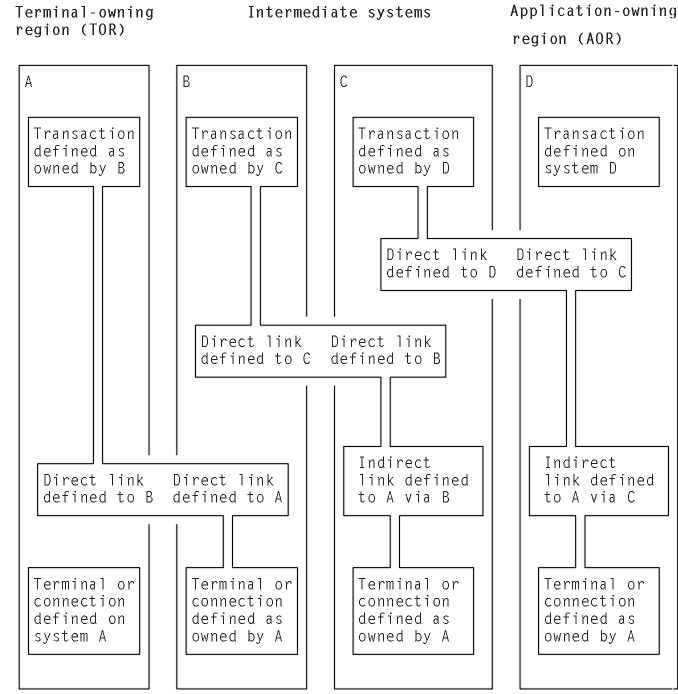Defining indirect links for transaction routing
In some older releases of CICS® (no longer supported), indirect links between CICS regions were required for transaction routing across intermediate regions. In a network consisting solely of currently-available CICS systems, indirect links are only required if you are using non-z/OS® Communications Server terminals. Optionally, you can define them for use with z/OS Communications Server terminals. Indirect links are never used for function shipping, distributed program link, asynchronous processing, or distributed transaction processing.

This figure illustrates a chain of systems (A, B, C, D) linked by MRO or APPC links (you cannot do transaction routing over LUTYPE6.1 links).
It is assumed that you want to establish a transaction-routing path between a terminal-owning region A and an application-owning region D. There is no direct link available between system A and system D, but a path is available via the intermediate systems B and C.
To enable transaction-routing requests to pass along the path, resource definitions for both the terminal (which may be an APPC connection) and the transaction must be available in all four systems. The terminal is a local resource in the terminal-owning system A, and a remote resource in systems B, C, and D. Similarly, the transaction is a local resource in the transaction-owning system D, and a remote resource in the systems A, B, and C.